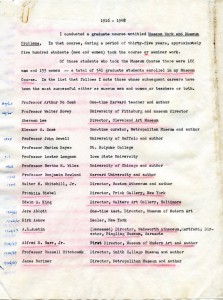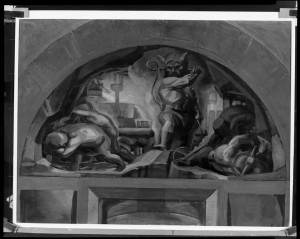The Harvard Art Museums Archives recently completed a processing project, generously funded by The Getty Foundation and the Institute of Museum and Library Services (IMLS). In the process of cataloging its major holdings from 1895-present, the Archives has uncovered some wonderful documents. The following represents material found during this project.
Paul J. Sachs was the first assistant museum director of the Fogg Museum and Harvard professor. He graduated from Harvard in 1900 and lectured at Wellesley College in 1916. Sachs became an Assistant Professor of Art at Harvard in 1917 and became a full Harvard professor in 1927. During his time at Harvard, he began developing his art collection, spending a great deal of time traveling, visiting museums and observing art trends. In 1915, Edward W. Forbes asked him to join the museum staff, and in 1923, Sachs became Associate Curator, remaining in this position until his retirement in 1948.
In 1922, he began teaching his most famous course, “Museum Work and Museum Problems,” commonly referred to as “the Museum Course.”

A list, compiled by Sachs, of former students who went on to become prominent figures in the art world museums.
Through the Museum Course, Sachs taught the history and philosophy as well as the administrative and organizational aspects of museums and curatorial work. He taught the finer aspects of collection development, donor relations, forgery detection and ethics. Students in the course were able to take trips to visit museums and private galleries. Many of his students later went on to direct the county’s major art museums.



